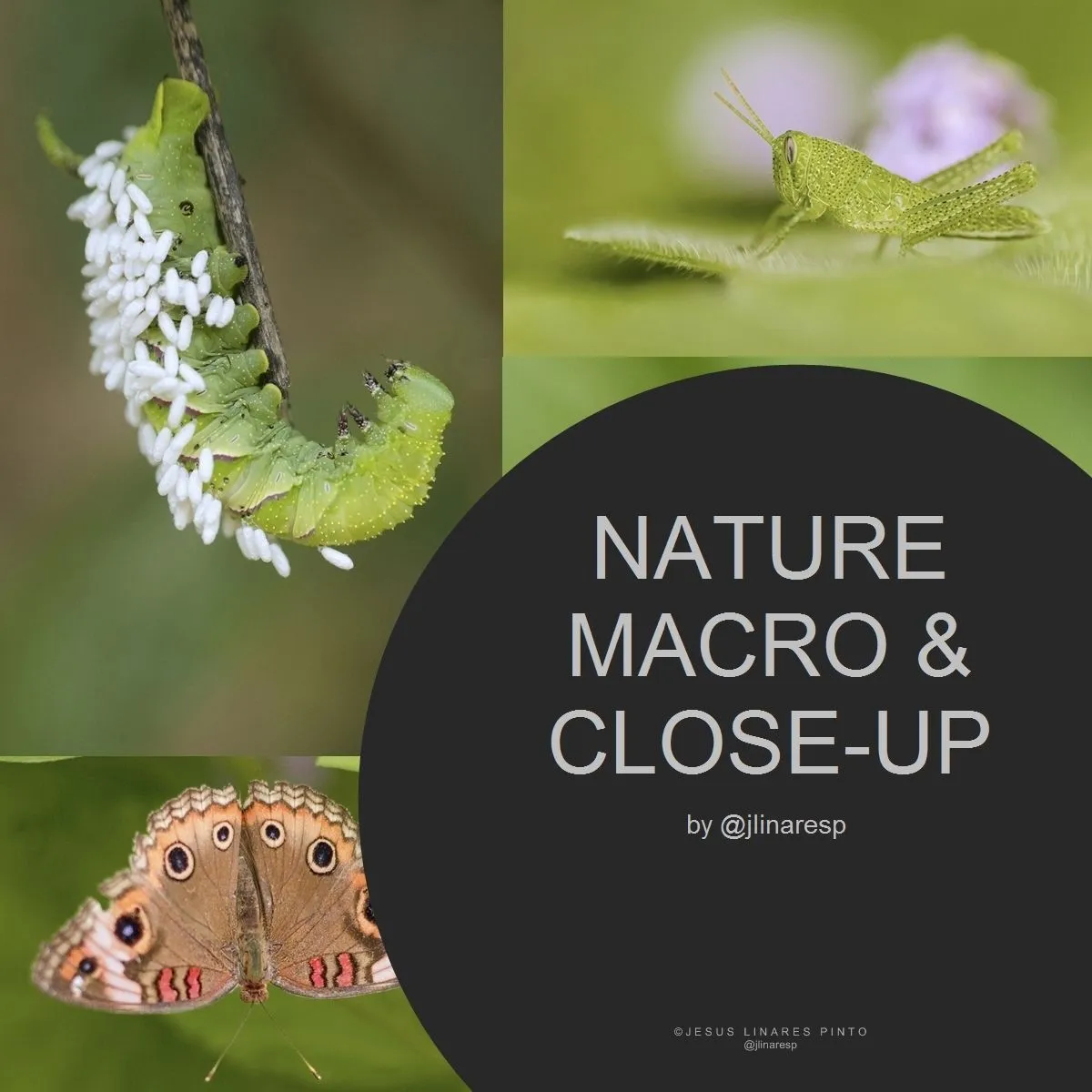
Hello #Hive photography lovers!... Welcome to a new edition of my series of macro and close-up photos taken by me in nature. As I have explained in previous publications; around my village I have a lot of natural surroundings that are perfect to go around and take pictures of this kind. Besides, we are in the middle of the rainy season and this results in an exponential increase of the diversity of species that can be seen... So let's go for the photos, which is the important thing here!...
¡Hola amigos amantes de la fotografía en #Hive!... Bienvenidos a una nueva edición de mis series de fotos macro y close-up realizadas por mi en la naturaleza. Tal como he explicado en publicaciones previas; alrededor de mi pueblo tengo un montón de entorno natural optimo para recorrer y hacer fotos de este tipo. Además, estamos en plena temporada de lluvias y esto redunda en un incremento exponencial de la diversidad de especies apreciables... ¡Vayamos entonces a por las fotos, lo cual es lo importante aquí!...
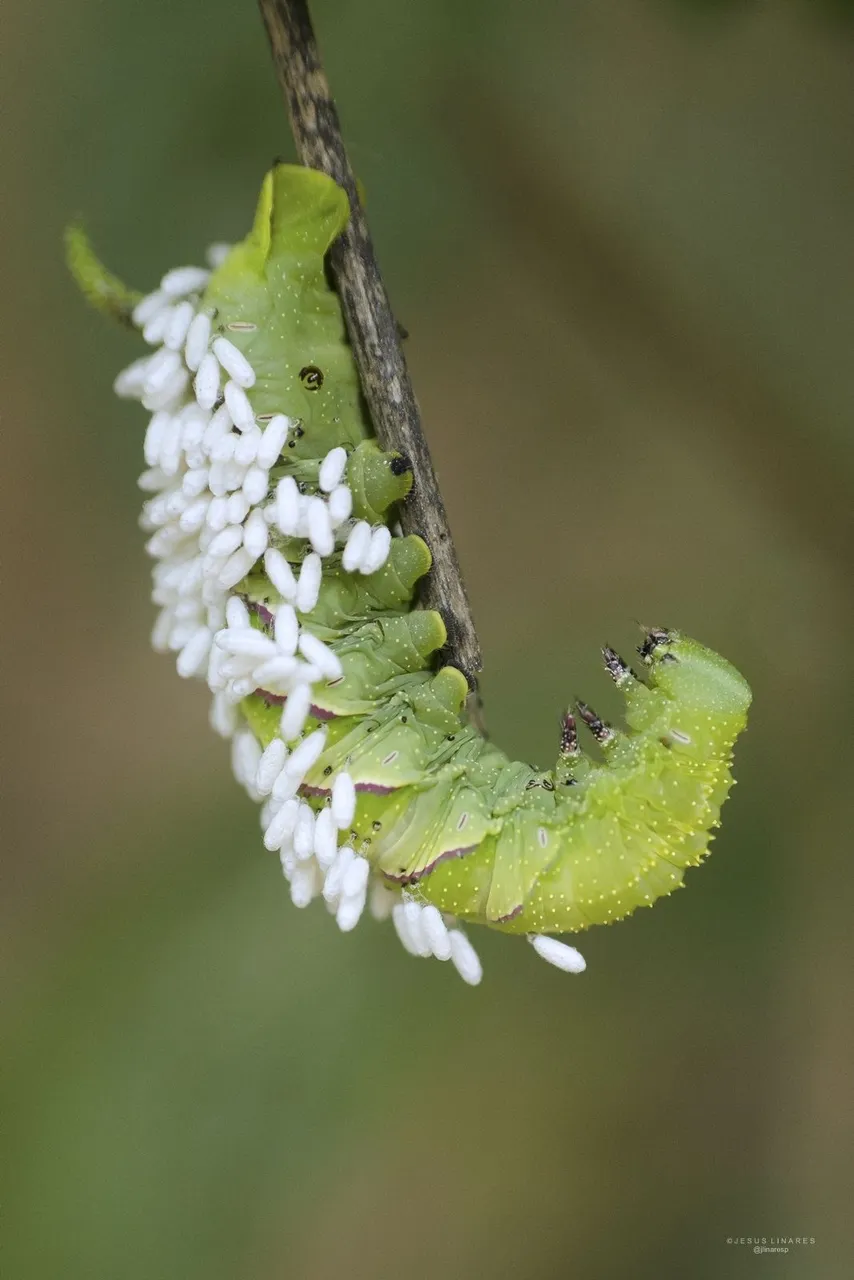
📷 01
50mm - 1/2000s - ISO 500 - F3.2
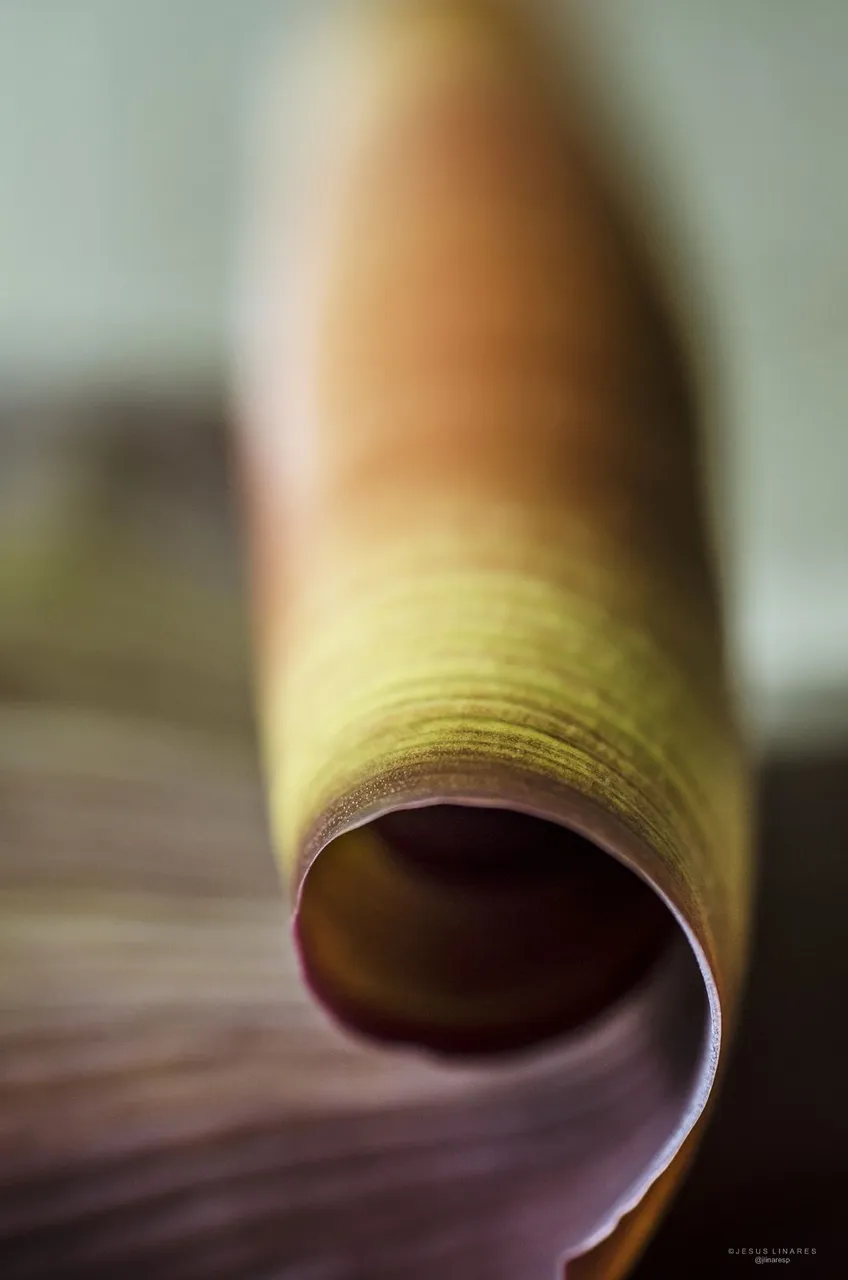
📷 02
50mm - 1/250s - ISO 400 - F3.5

📷 03
50mm - 1/2000s - ISO 320 - F2.5
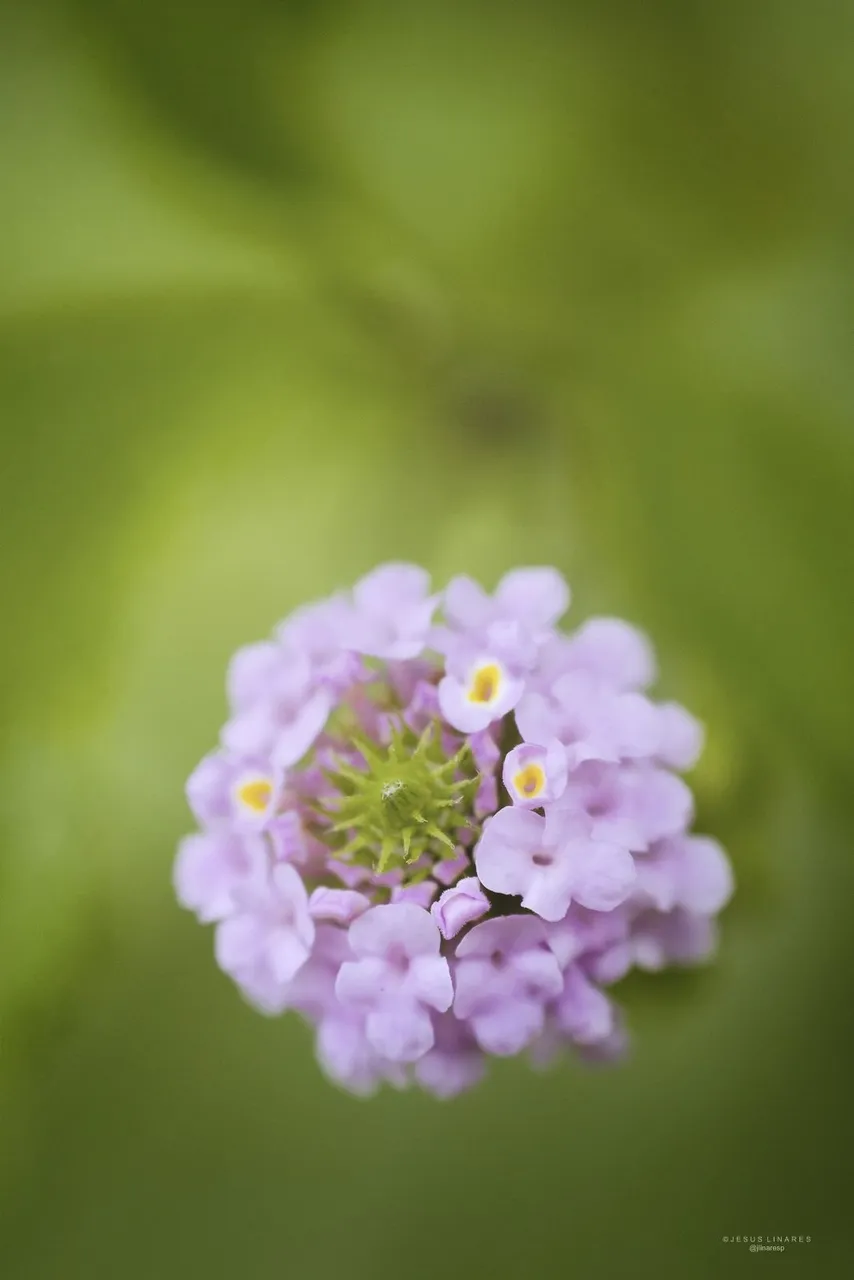
📷 04
50mm - 1/640s - ISO 320 - F4.0
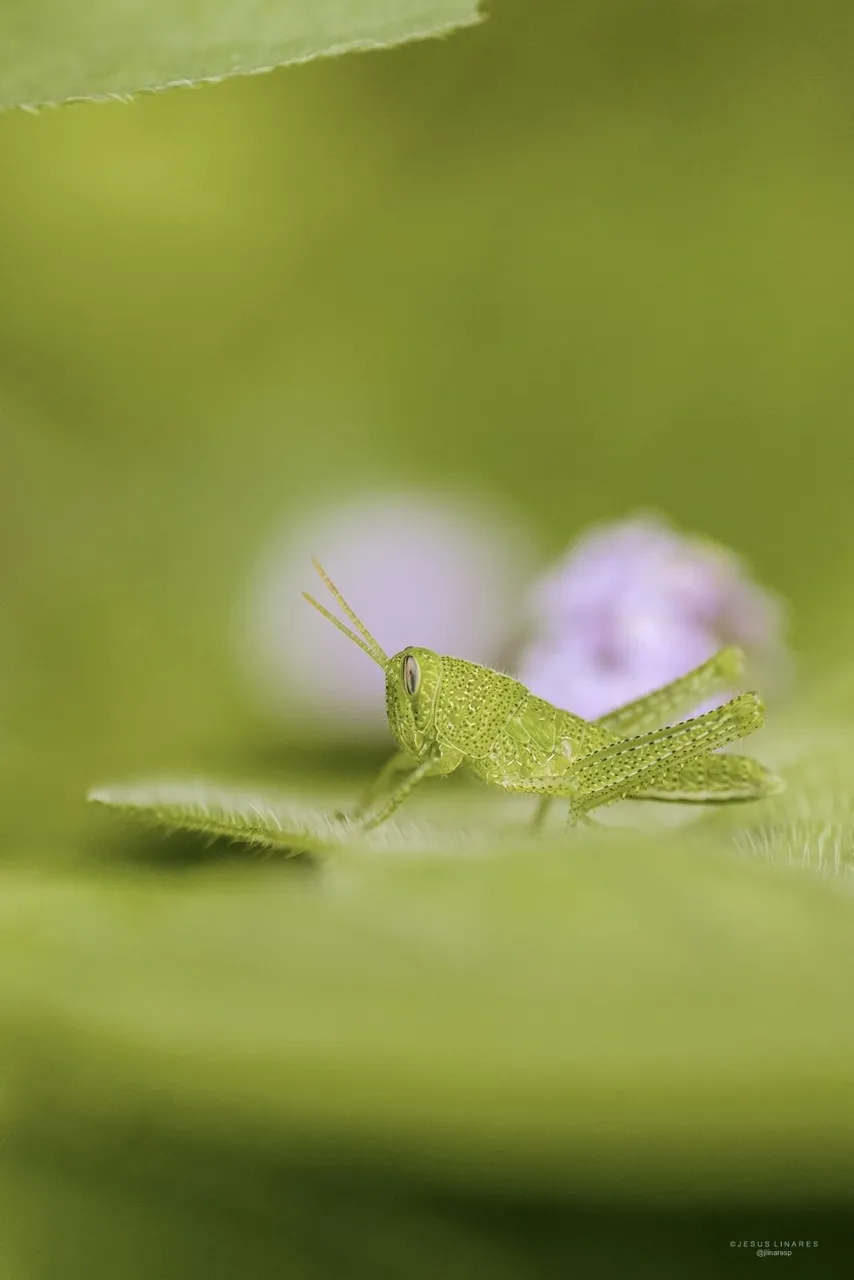
📷 05
50mm - 1/1250s - ISO 320 - F4.0
📷 01 A caterpillar parasitized by wasp larvae, whose eggs were laid inside the caterpillar and now hatch and generate cocoons to continue their cycle.
📷 02 The flower petal of a wild musaceous plant species photographed in macro mode.
📷 03 One of the many species of butterflies belonging to the genus Juniona and locally called "bull's eyes" because of the spots on their wings, which (according to them) resemble the eyes of a bull.
📷 04 The flower (about 2 cm in diameter) of a wild species of Lantana called by the villagers: "Cariaquito morado" and about which there is a superstition that bathing with an infusion of this plant attracts "good luck".
📷 05 A juvenile grasshopper individual; in a few weeks the populations of these insects will multiply and cause a severe impact on the foliage and plantations for human consumption, which happens every year.
📷 01 Una oruga parasitada por larvas de avispa, cuyos huevos fueron puestos en el interior de la oruga y ahora eclosionan y generan capullos para continuar su ciclo.
📷 02 El pétalo de la flor de una especie de planta musacea salvaje fotografiado en modo macro.
📷 03 Una de las tantas especies de mariposas pertenecientes al genero Juniona y llamadas localmente "ojitos de toro" por las manchas de sus alas, las cuales (según) semejan a los ojos de un toro.
📷 04 La flor (de unos 2 ctms de diámetro) de una especie salvaje de Lantana llamada por las personas del poblado: "Cariaquito morado" y sobre la cual existe la superstición de que bañarse con infusión de esta planta, atrae la "buena suerte".
📷 05 Un individuo juvenil de saltamontes; en pocas semanas las poblaciones de estos insectos se multiplicarán y causarán un severo impacto sobre el follaje y plantaciones para consumo humano, algo lo cual sucede cada año.
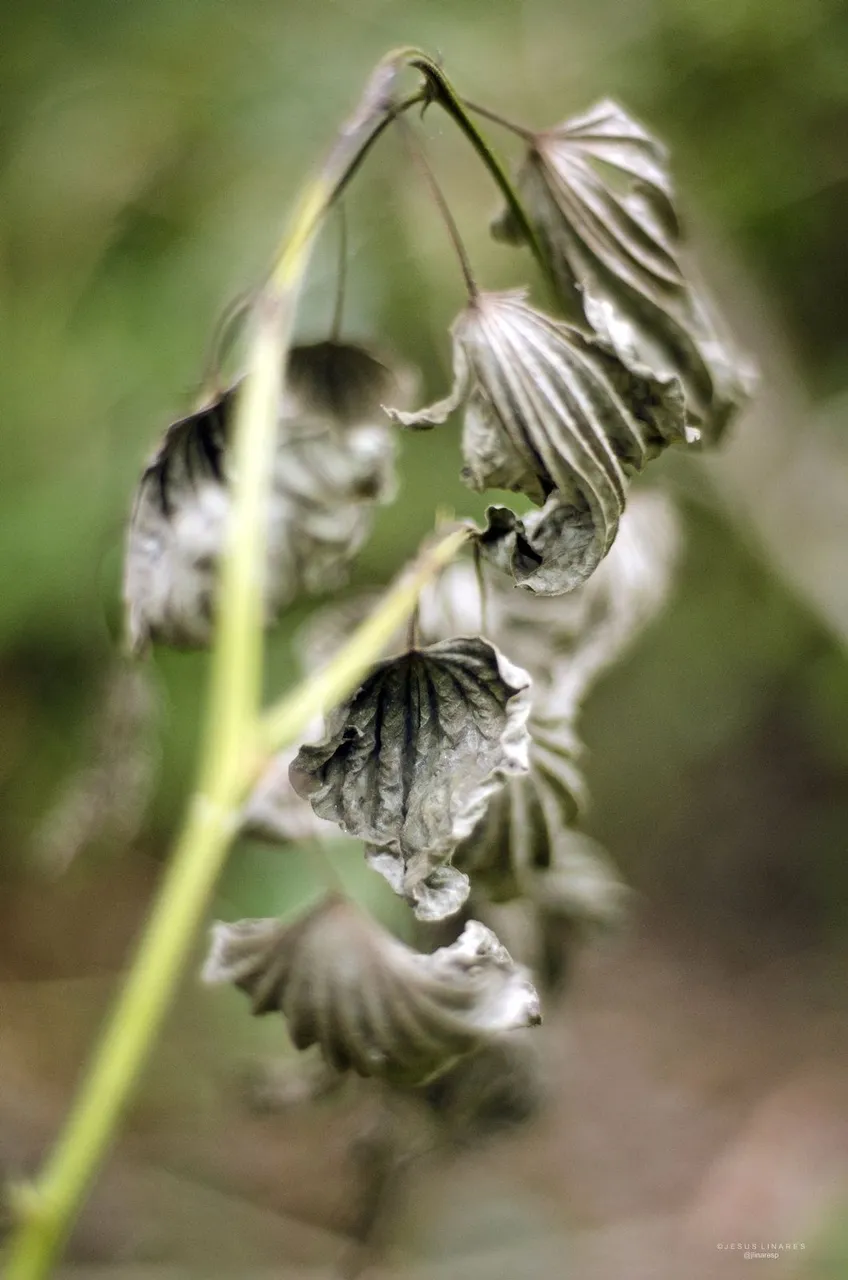
📷 06
50mm - 1/1000s - ISO 320 - F1.8
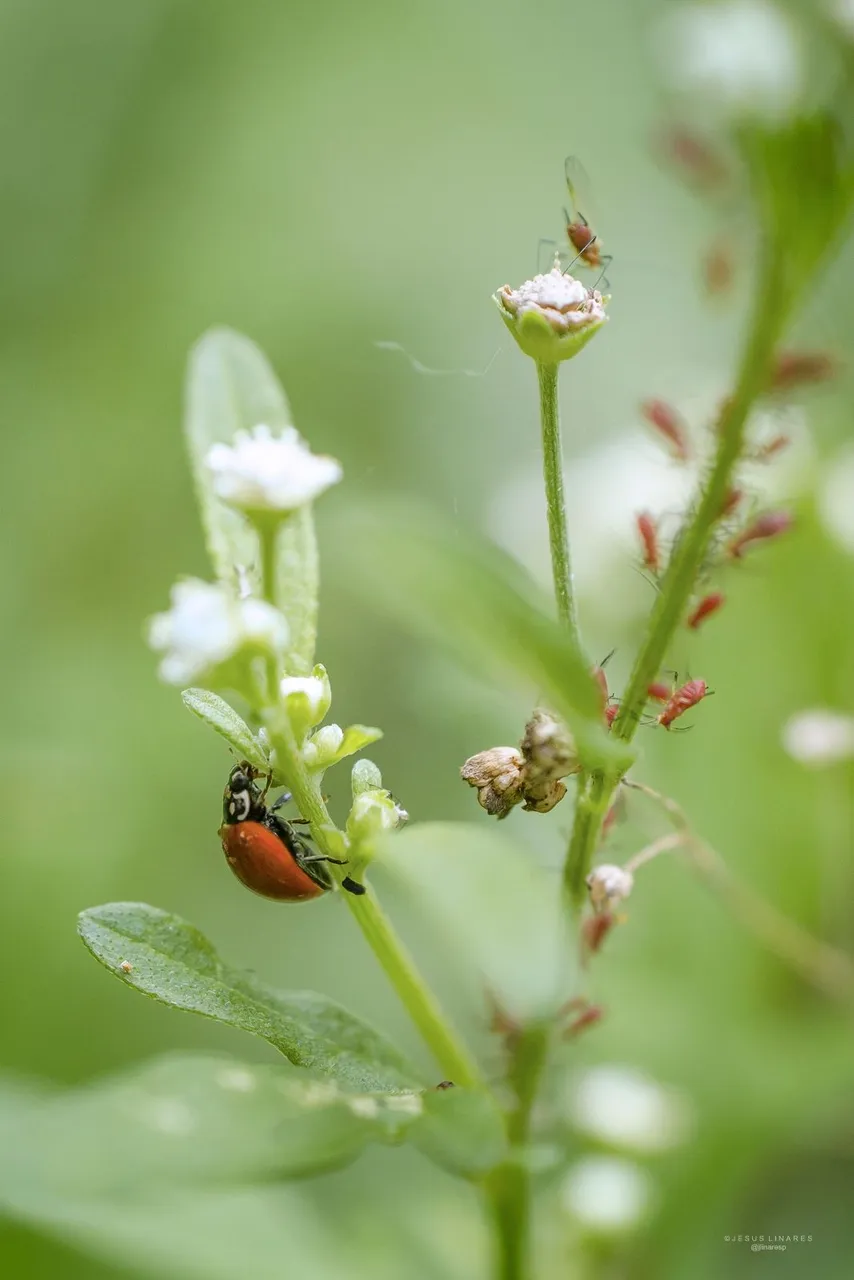
📷 07
50mm - 1/640s - ISO 320 - F4.0

📷 08
50mm - 1/800s - ISO 320 - F4.0
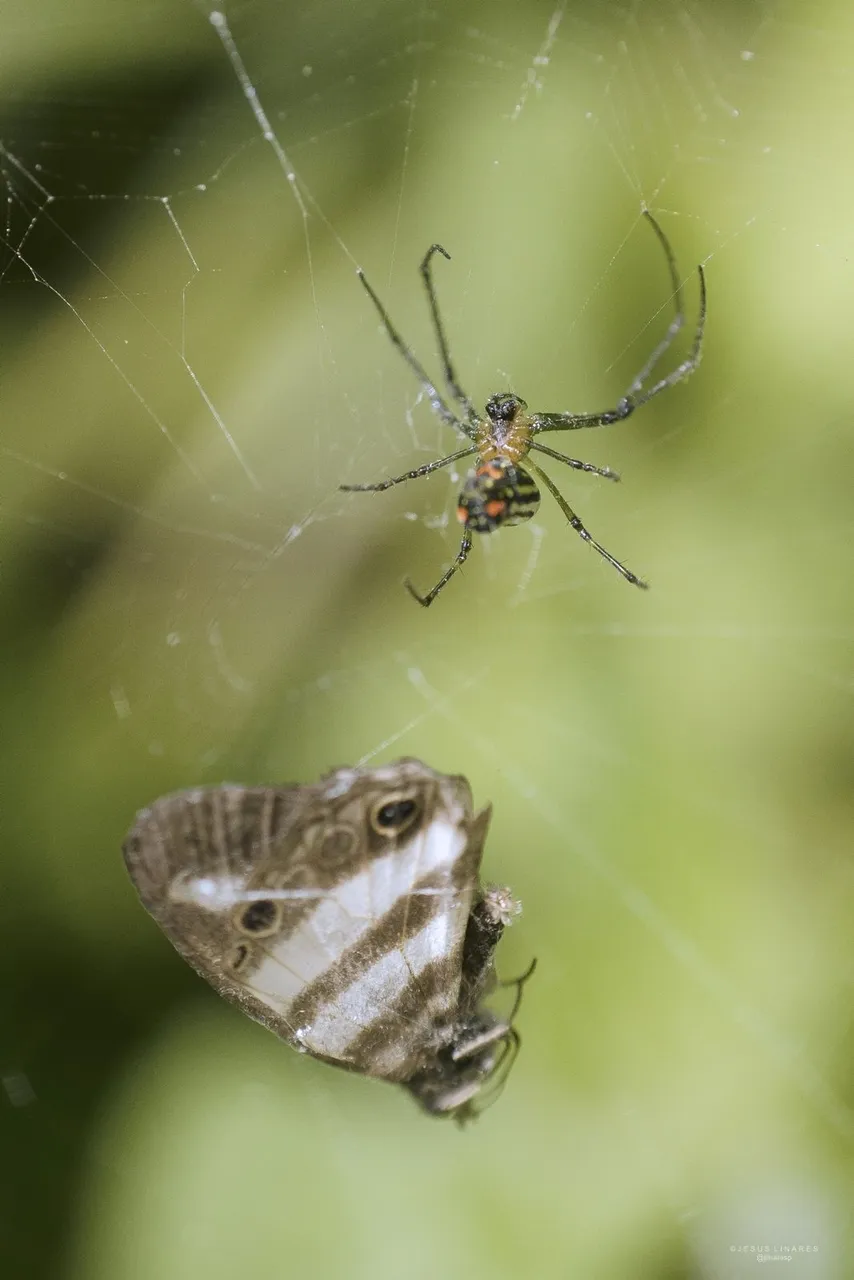
📷 09
50mm - 1/3200s - ISO 320 - F4.5
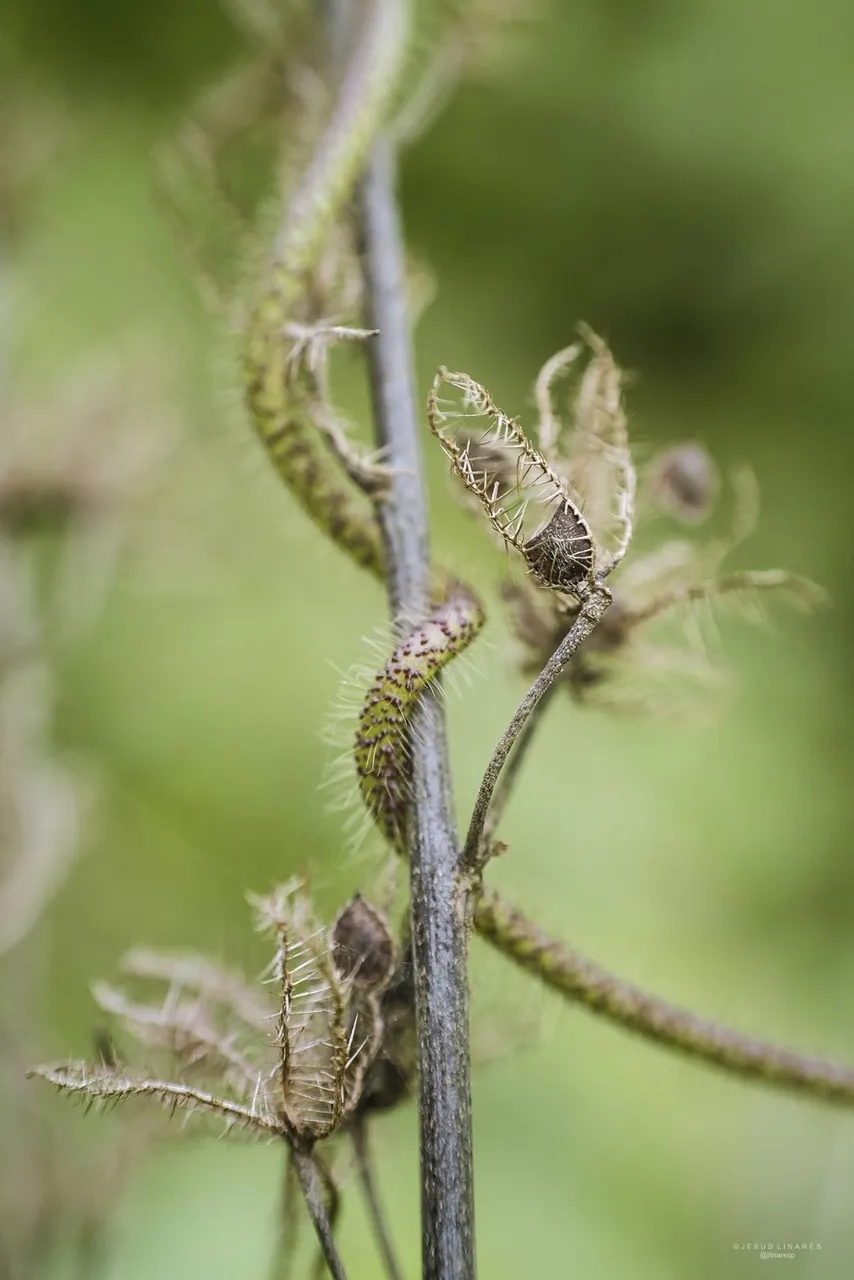
📷 10
50mm - 1/2000s - ISO 400 - F3.5
📷 06 A simple branch of a dried plant with its leaves. I usually take this kind of photos because I love the shapes and the "dramatic" air of it all.
📷 07 An insect of the so called "ladybirds" positioned very close to a branch infected by aphids, which will probably serve as food for the ladybird at any moment.
📷 08" One of those "horrendous" (in my opinion) caterpillars which are called by everyone here as "naked worms" because of the transparency of their skin.
📷 09 A tiny spider rests next to the remains of a butterfly that fell trapped in its web.
📷 10 Vining plants provide an infinite variety of photos thanks to their shapes, hairiness, seeds and leaves.
📷 06 Una simple rama de una planta seca con sus hojas. Hago este tipo de fotos generalmente porque me encantan las formas y ese aire "dramático" que hay en todo esto.
📷 07 Un insecto de los llamados "Mariquitas" posicionado muy cerca de una rama infectada por áfidos, los cuales probablemente servirán como alimento a la mariquita en cualquier momento.
📷 08 Una de esas "horribles" (según mi parecer) orugas las cuales son llamadas por todos aquí como "gusanos desnudos" debido la transparencia de su piel.
📷 09 Una diminuta araña reposa junto a los restos de una mariposa que cayó atrapada en su tela.
📷 10 Las plantas enredaderas proveen una infinita variedad de fotos gracias a sus formas, pilosidad, semillas y hojas.
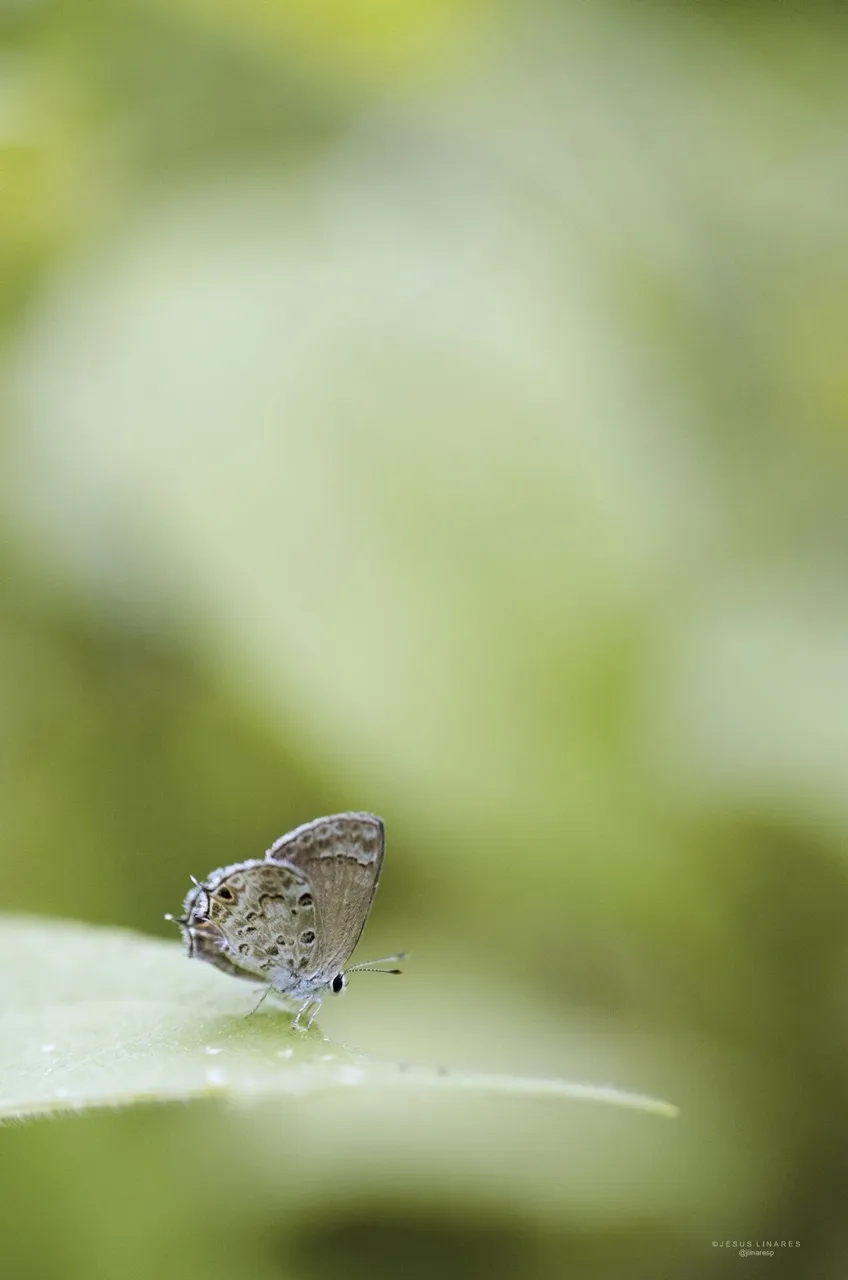
📷 11
50mm - 1/2500s - ISO 400 - F3.2
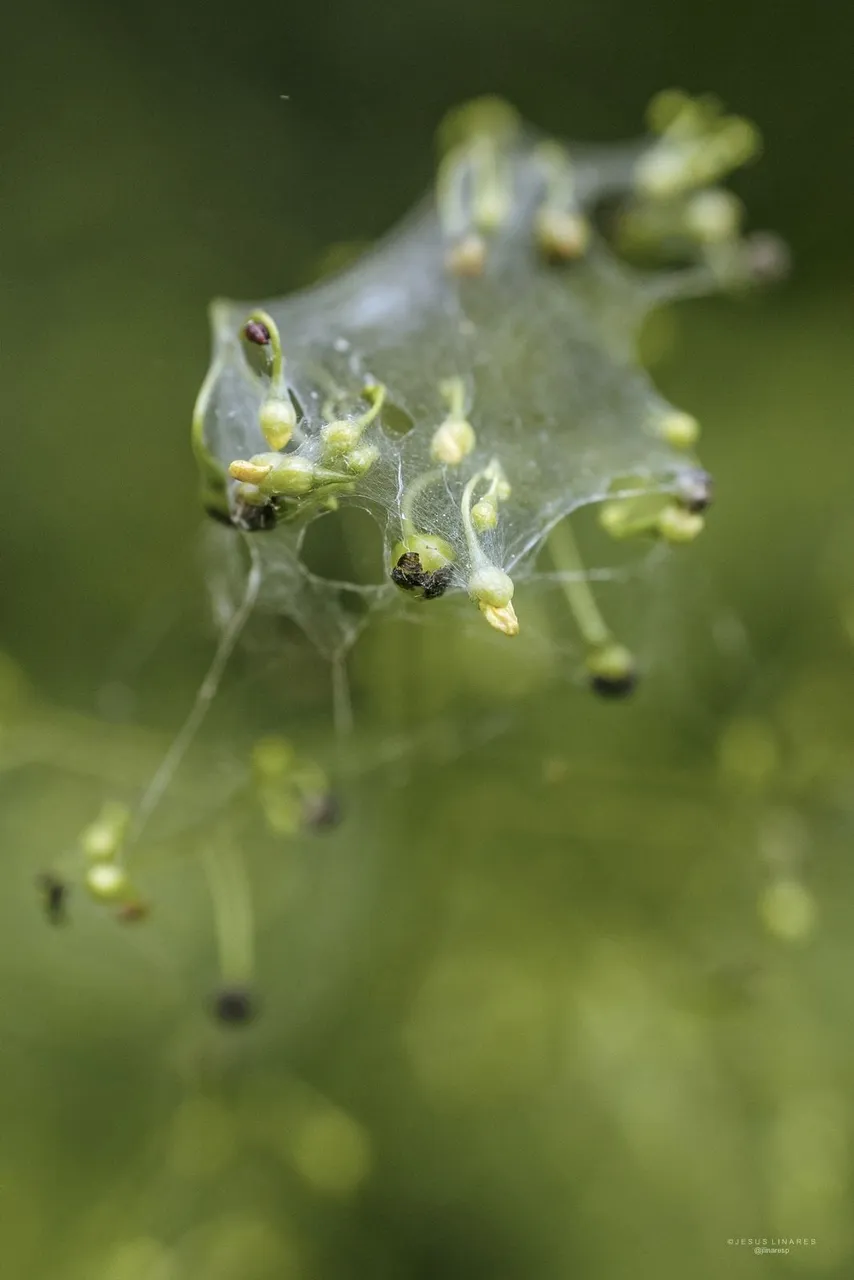
📷 12
50mm - 1/640s - ISO 400 - F4.0
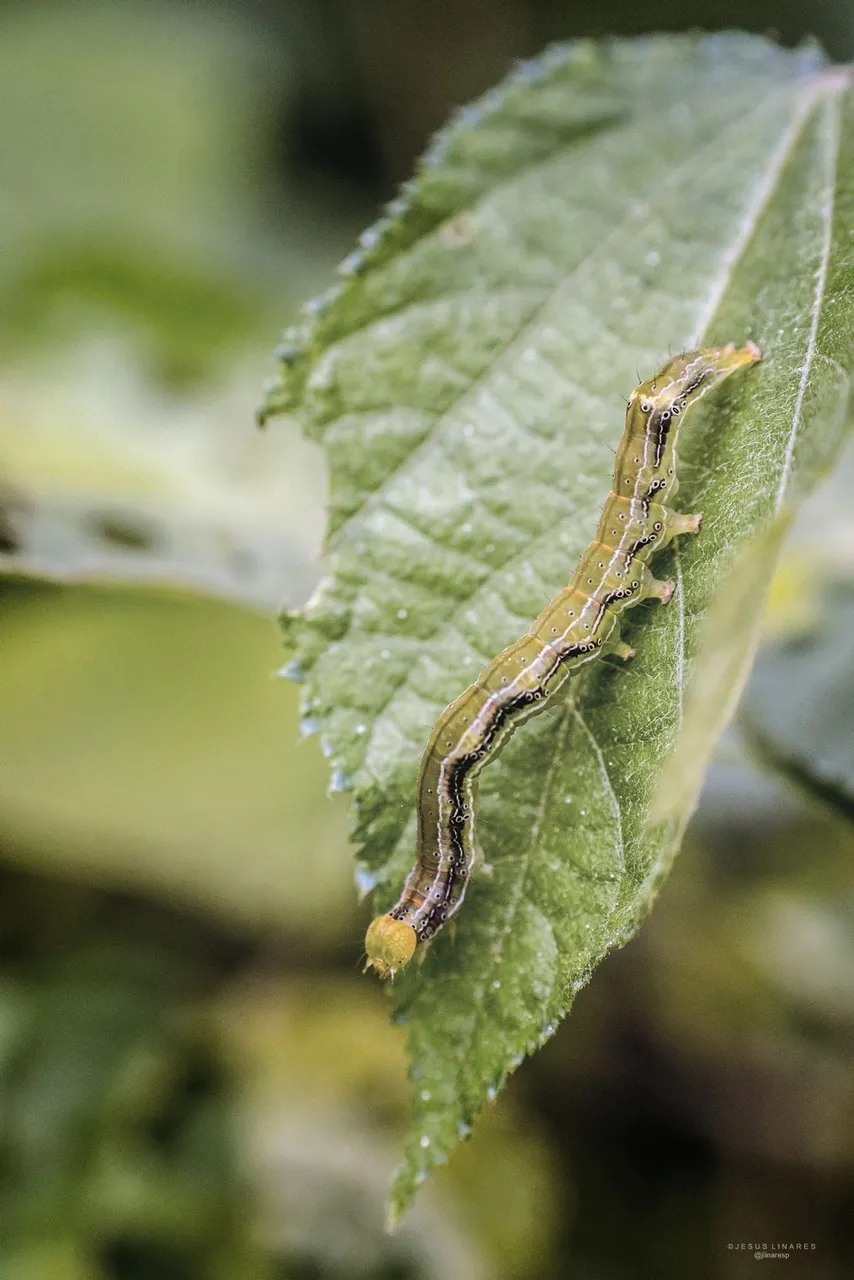
📷 13
50mm - 1/1000s - ISO 400 - F4.5

📷 14
50mm - 1/160s - ISO 500 - F4.0
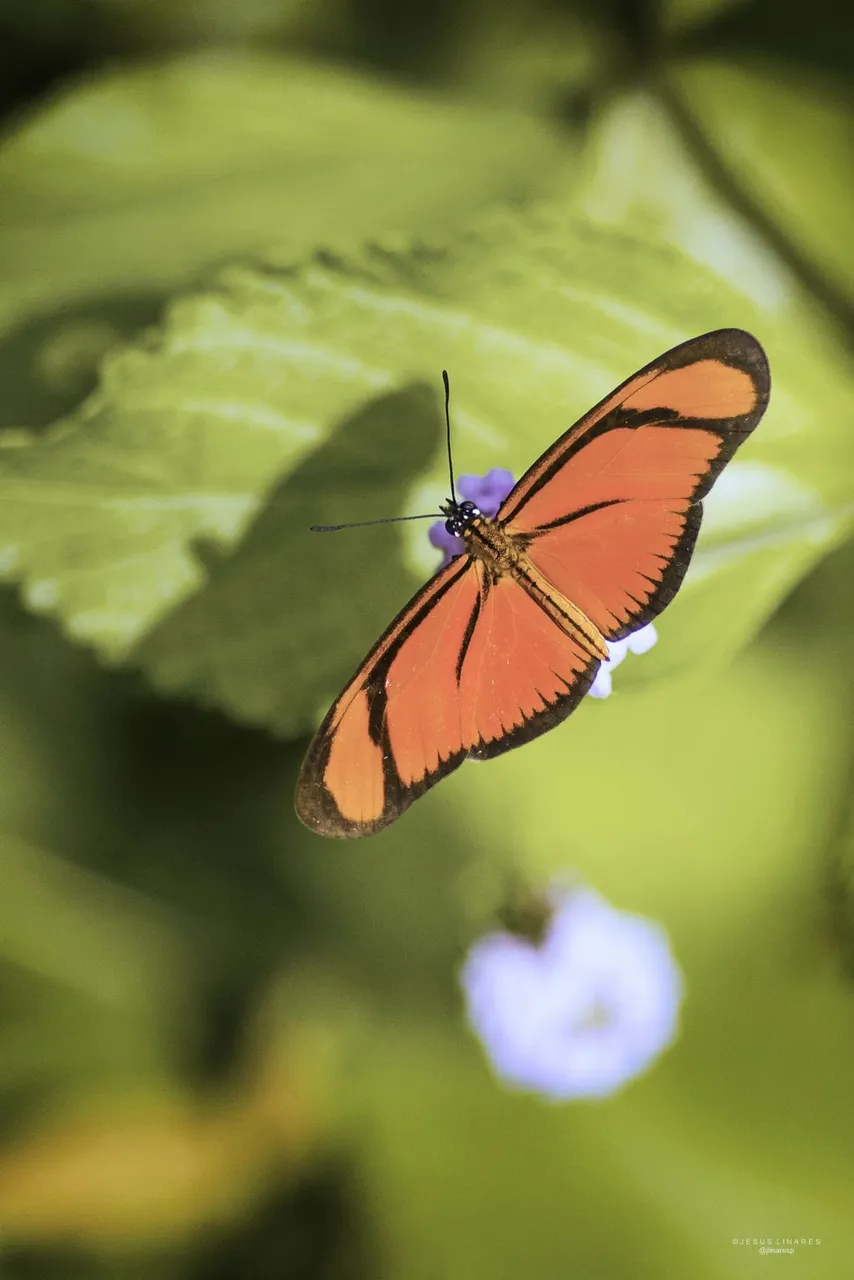
📷 15
50mm - 1/8000s - ISO 250 - F3.2
📷 11 A tiny butterfly of the so-called "lichenids" whose populations tend to be larger in times of drought, but which can also be seen in smaller numbers in the rainy months.
📷 12 Not all spiders spin radial webs, some spiders make these kinds of cocoons on the flowers of plants, which they use to trap small, careless bees.
📷 13 Already the number of caterpillars on the vegetation is such that you can even hear them chewing the leaves if it is quiet enough. This is the harbinger of a lot of butterflies flying in a few weeks (a very good thing for me).
📷 14 An abstract photo... This is an aerial root which has a curious deformation at the end. I suppose it is some kind of mutation.
📷 15 In the midday sun, this butterfly, whose species I am completely unaware of, seems to be immune to high temperatures and unbearable humidity and flies from one flower to another happily sucking nectar.
📷 11 Una diminuta mariposa de las llamadas "licenidas" cuyas poblaciones suelen ser mayores en épocas de sequía, pero las cuales también pueden apreciarse en cantidades menores en los meses lluviosos.
📷 12 No todas las arañas tejen telas radiales, algunas hacen estas especies de capullos en las flores de las plantas, los cuales les sirven para atrapar pequeñas abejas descuidadas.
📷 13 Ya la cantidad de orugas en la vegetación es tal que incluso puede oírselas masticar las ojas si hay suficiente silencio. Este es el presagio de un montón de mariposas volando en pocas semanas (algo muy bueno para mi).
📷 14 Una foto abstracta... Se trata de una raíz aérea la cual presenta una curiosa deformación en su extremo. Supongo que se trata de algún tipo de mutación.
📷 15 Bajo pleno sol del mediodía, esta mariposa cuya especie desconozco por completo, parece ser inmune a las altas temperaturas e insoportable humedad y vuela de una flor a otra libando alegremente el néctar.
Thank you very much for visiting my blog and appreciating my content!
¡Muchas gracias por visitar mi blog y apreciar mi contenido!
ADDITIONAL TECHNICAL NOTE: Photographs captured with my Nikon D7000 DSLR camera in RAW format, then processed in Adobe Camera RAW for adjustments regarding light, sharpening, contrast and depth... They were then exported to JGP format on which minor modifications such as straightening and adding watermarks were carried out using PhotoScape 3.6.3.
NOTA TÉCNICA ADICIONAL: Fotografias capturadas con mi cámara DSLR Nikon D7000 en formato RAW, procesadas posteriormente en Adobe Camera RAW para ajustes relativos a luz, afilado, contraste y profundidad... Luego fueron exportadas a formato JGP sobre el cual se llevaron a cabo modificaciones menores como enderezado y agregado de marcas de agua usando PhotoScape 3.6.3.
"We make photographs to understand what our lives mean to ourselves." - Ralph Hattersley.
"Hacemos fotografías para comprender lo que nuestras vidas significan para nosotros mismos." - Ralph Hattersley.

Lens: Nikon AF Nikkor 50mm f/1.8d FX
Lens: Raynox DCR-150
Lente: Nikon AF Nikkor 50mm f/1.8d FX
Lente: Raynox DCR-150